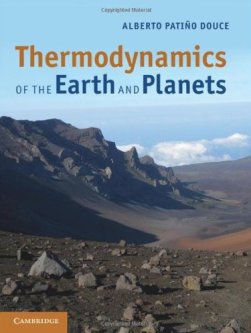Orogenesis; the Making of Mountains

Mountains are striking features, and readers of any book on orogenies begin with considerable expectations - a daunting prospect for authors. Mike Johnson and Simon Harley have produced a book that provides an overview of orogenic research and an introduction to the physico-chemical properties of mountain belts. Both are leading authorities in their fields and their excellent understanding of the issues involved comes though in the clearly-structured text.
Orogenic belts, old and new, are difficult to write about because much of the fascination lies in the differences between them. The authors start with plate tectonics, driving mechanisms, physical and chemical principles of deformation, isostasy and geochronology, before getting into orogenic belts through large-scale features such as thrusts and faults. I was keenest to know what an orogenic belt was geologically, what orogenic belts’ key features are, and how might I recognise an old one that is now eroded. However, there is inevitably insufficient space to convey a reasonable understanding of the topics listed above, and to me they therefore required setting in context – something that could only come from knowing a little more about orogenic belts and the issues involved in orogenic research. These only emerge later in the book.
There are many good things in this book; but my sense is that it will appeal most to readers who already know a fair amount about orogenies, and want to be brought up to date. Those classic detailed Alpine cross-sections can be off-putting to new students, and many chapters rely on reproductions of diagrams already in the literature. I think an opportunity has been lost by not developing new figures that would be accessible to students and non-specialists. These would need colour; and bundling colour plates at the back of a book now looks a little dated.
I am sure the publishers would defend this on cost ground; but many modern books have overcome that. I enjoyed the text, but was too often left wondering about the diagrams that might have accompanied it. In the end I wanted more guidance about what the big topics are, and what I should be thinking about as research into orogenies develops. The topics are contemporary; high precision geochronology is increasingly challenging current thermal models for orogenic systems; mountains influence climate, and there is a wide-ranging final chapter on secular change in orogeny. Those prepared to dig will be well rewarded, and despite my reservations, this book deserves to be widely read.
Reviewed by Chris Hawkesworth, University of St Andrews
OROGENESIS; THE MAKING OF MOUNTAINS
MICHAEL RW JOHNSON AND SIMON L HARLEY Published by Cambridge University Press 2012 ISBN: 9780521765565 (hbk) 398pp List price: £45 www.cambridge.org
Thermodynamics of the Earth and Planets

Planetary bodies derive their energy externally from solar electromagnetic radiation and internally from gravitational and nuclear binding energy. Dissipation of these energy sources produces heat that is stored within various reservoirs on or within the planet. Transfer processes make this heat available to drive the wide range of planetary processes that we observe in the Solar System. The author’s thesis is that a planetary body may be considered as a combination of heat reservoirs and heat engines and thus planetary processes are best understood in thermodynamic terms.
This book provides a rigorous introduction to thermodynamics, together with the related topics of heat and mass transfer, for a reader with some background in physical sciences and mathematics. The material is presented in a clear, user-friendly style that makes liberal use of worked examples integrated with the text. These worked examples are drawn from planetary bodies right across the Solar System in order to show the general applicability of the methods developed. End of chapter exercises are provided, together with a full set of solutions that can be downloaded from the book’s website. A particular strength of the book is the way in which the author links the macroscopic thermodynamic concepts to the “microscopic world”; for example changes in gas specific-heat capacity with temperature are interpreted in terms of the partition of internal energy between the translational, rotational and vibrational degrees of freedom of a molecule.
This is a superb publication, with many insightful explanations of planetary processes. It is very well produced in a clear type and with excellent illustrations, a detailed table of contents and a comprehensive index. James Hutton, who viewed the Earth as a heat engine “capable of fusing together sedimentary rocks, causing upheavals in strata and creating mountains”, would surely have relished this book.
Reviewed by Duncan Woodcock
THERMODYNAMICS OF THE EARTH AND PLANETS
ALBERTO PATINO DOUCE, Published by: Cambridge University Press, 2011. ISBN: 9780521896214 (hbk). 709pp. List price: £50 www.cambridge.org/patino_douce